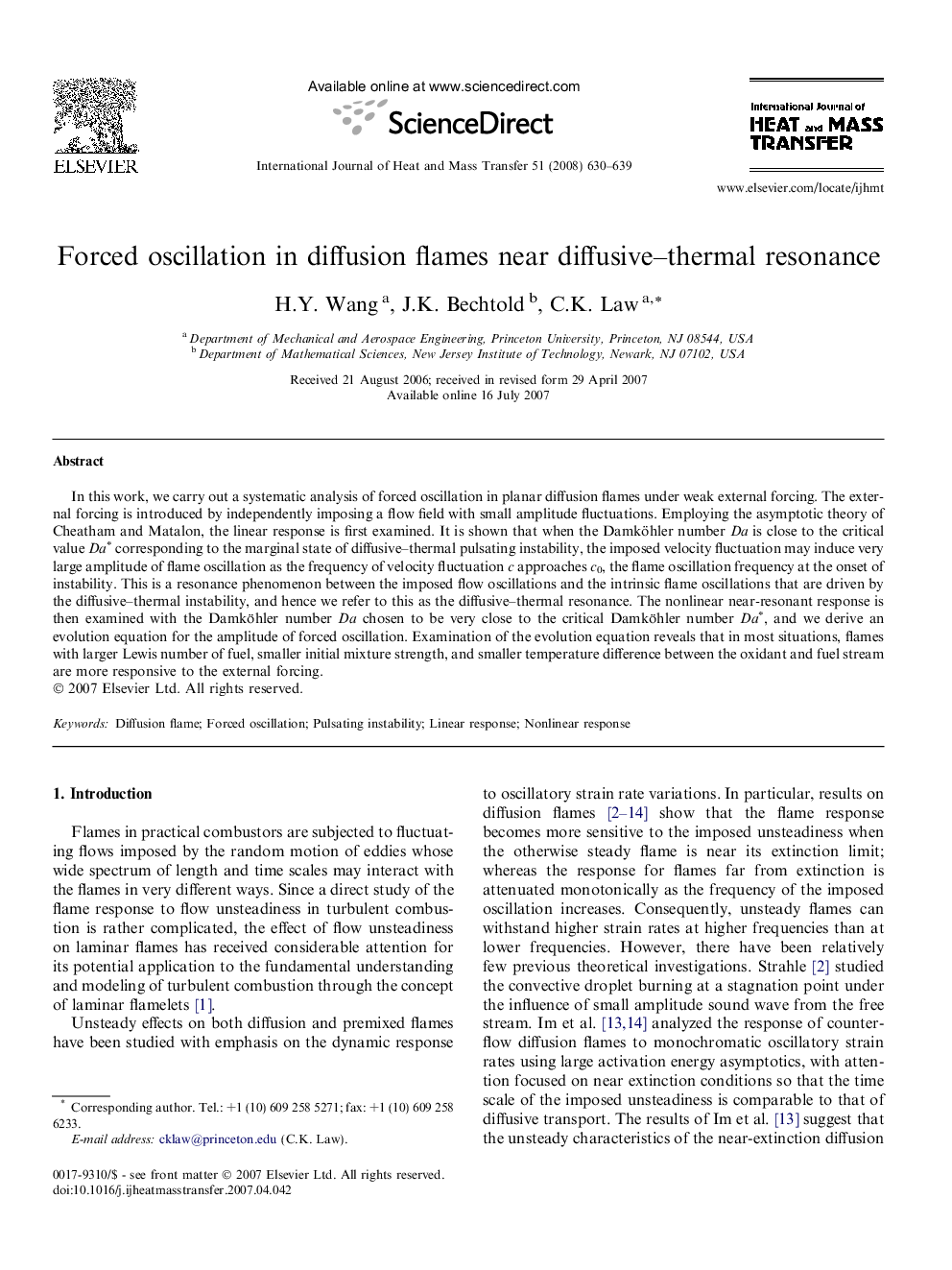| Article ID | Journal | Published Year | Pages | File Type |
|---|---|---|---|---|
| 662896 | International Journal of Heat and Mass Transfer | 2008 | 10 Pages |
In this work, we carry out a systematic analysis of forced oscillation in planar diffusion flames under weak external forcing. The external forcing is introduced by independently imposing a flow field with small amplitude fluctuations. Employing the asymptotic theory of Cheatham and Matalon, the linear response is first examined. It is shown that when the Damköhler number Da is close to the critical value Da∗ corresponding to the marginal state of diffusive–thermal pulsating instability, the imposed velocity fluctuation may induce very large amplitude of flame oscillation as the frequency of velocity fluctuation c approaches c0, the flame oscillation frequency at the onset of instability. This is a resonance phenomenon between the imposed flow oscillations and the intrinsic flame oscillations that are driven by the diffusive–thermal instability, and hence we refer to this as the diffusive–thermal resonance. The nonlinear near-resonant response is then examined with the Damköhler number Da chosen to be very close to the critical Damköhler number Da∗, and we derive an evolution equation for the amplitude of forced oscillation. Examination of the evolution equation reveals that in most situations, flames with larger Lewis number of fuel, smaller initial mixture strength, and smaller temperature difference between the oxidant and fuel stream are more responsive to the external forcing.
